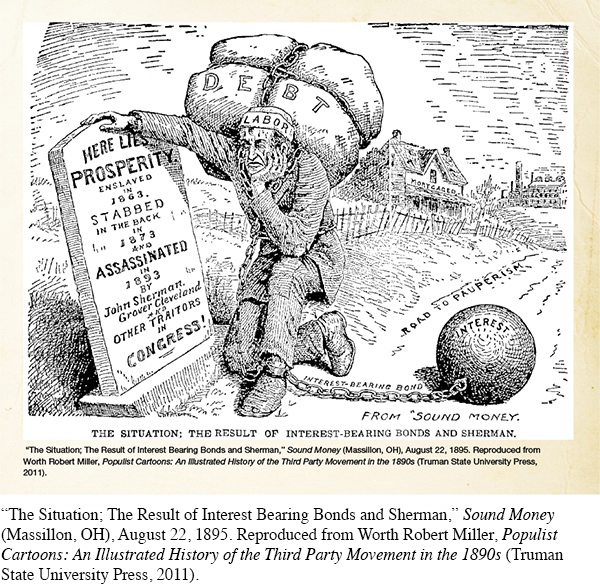Solo Analysis Document 17.4 Walter Huston, Here Lies Prosperity, 1895
SOLO ANALYSIS
Walter Huston | Here Lies Prosperity, 1895
The “money question” became a focus of American politics in the first half of the 1890s and was exacerbated by the depression of 1893. Those who supported the gold standard believed that it provided the basis for a sound and stable economy. Proponents of the unlimited coinage of silver, especially Populists and Democrats such as William Jennings Bryan, asserted that expansion of the money supply would liberate farmers and workers from debt and bring prosperity to more Americans. The following cartoon illustrates the “free silver” point of view.
Document 17.4

Interpret the Evidence
Why does the cartoonist use the terms “enslaved,” “stabbed in the back,” “assassinated,” and “traitors”? Whom does he accuse of these misdeeds?
According to the cartoonist, what are the causes of poverty?
Put It in Context
How did the depression of 1893 affect the economic situation of farmers and working people? Whom did debt affect more?
Exploring American HistoriesPrinted Page 571
Chapter Timeline